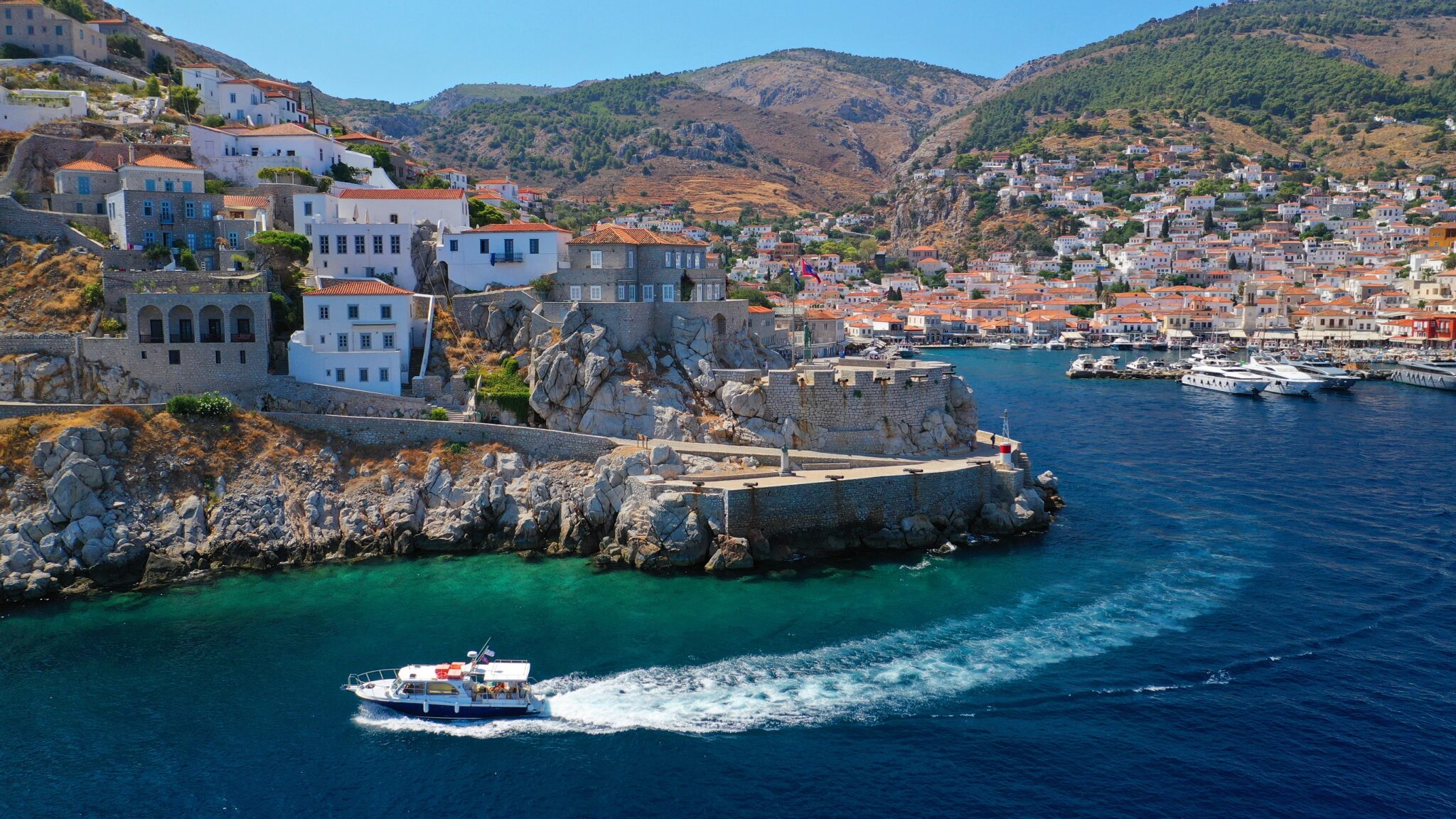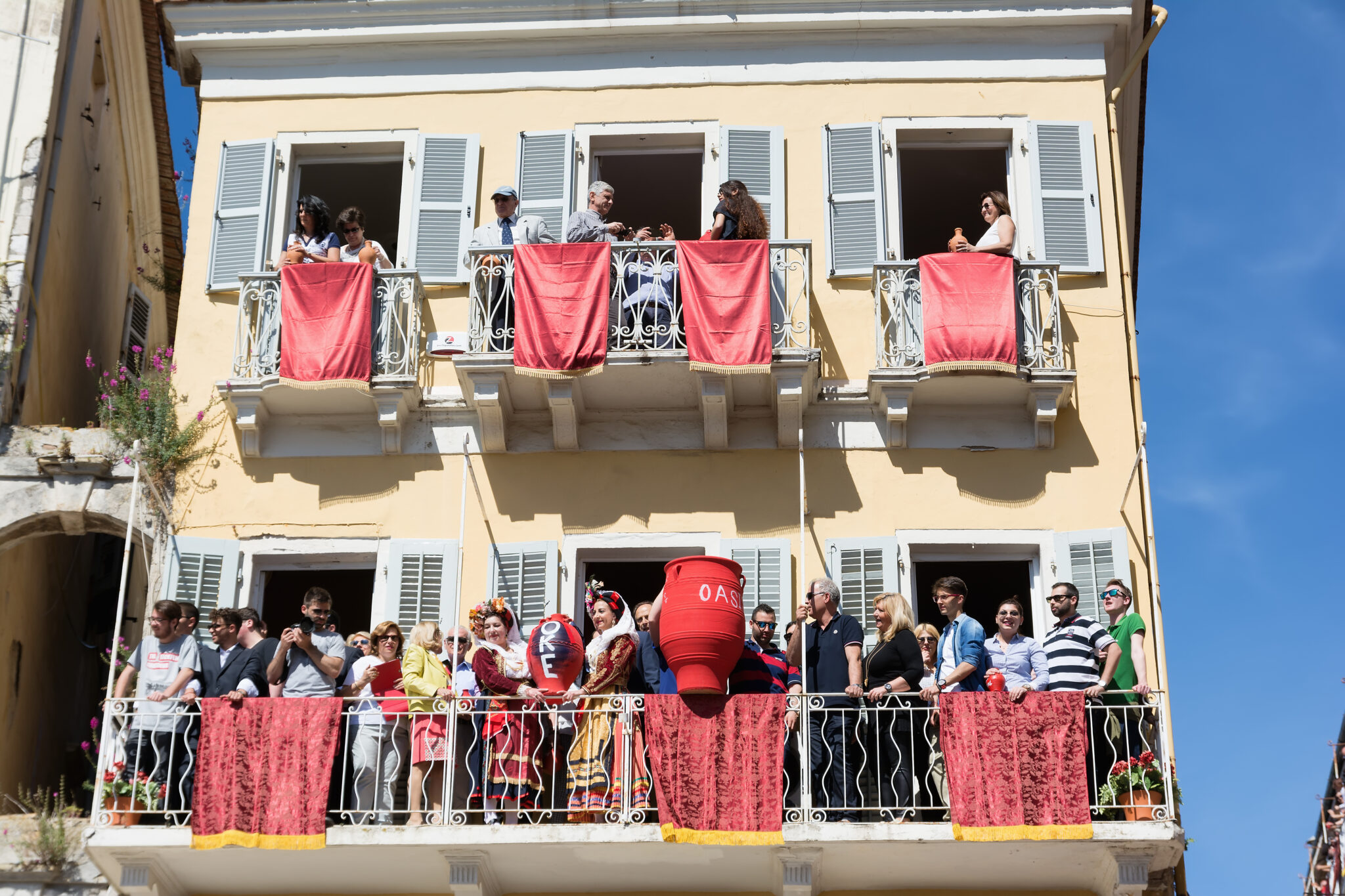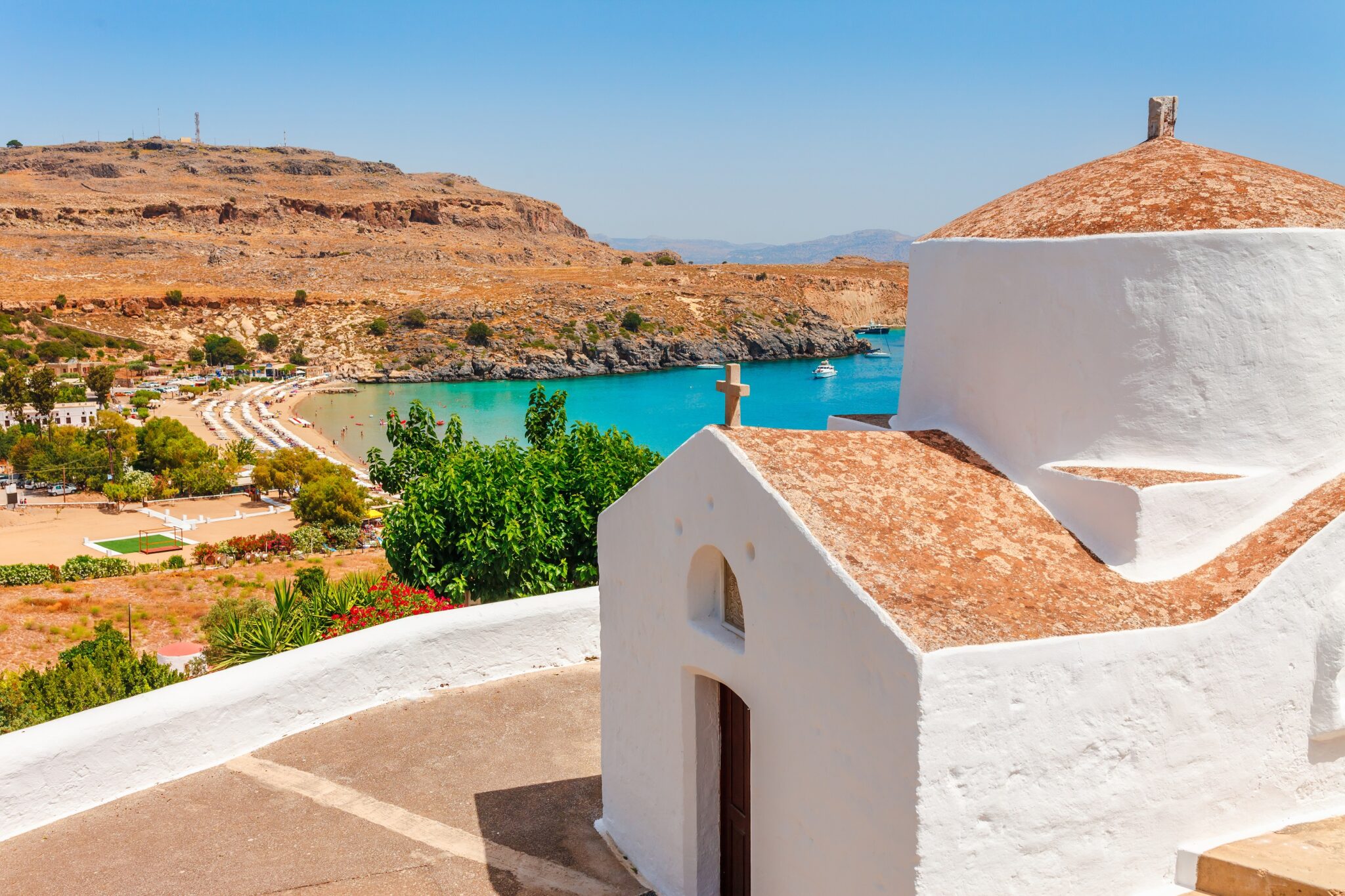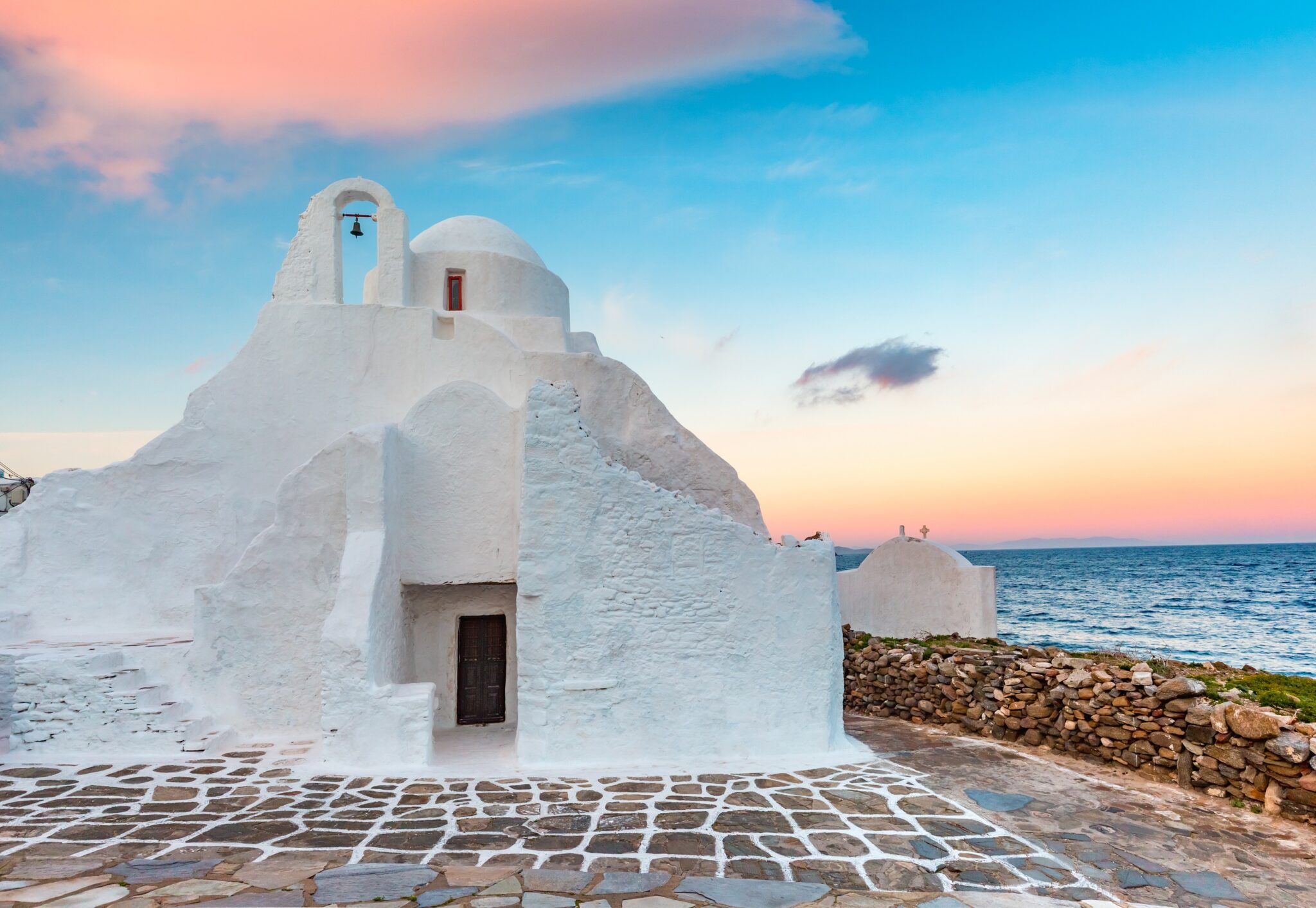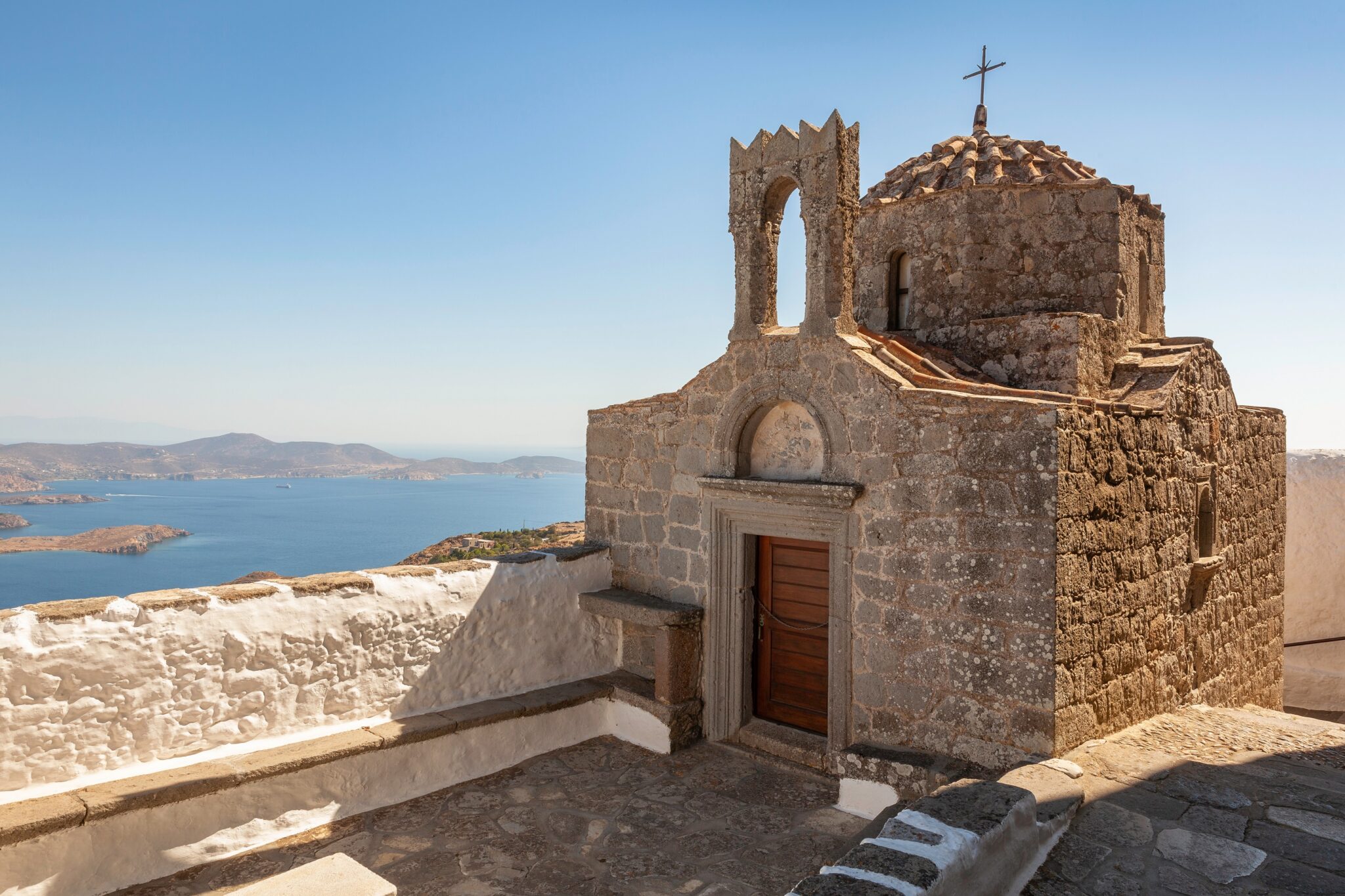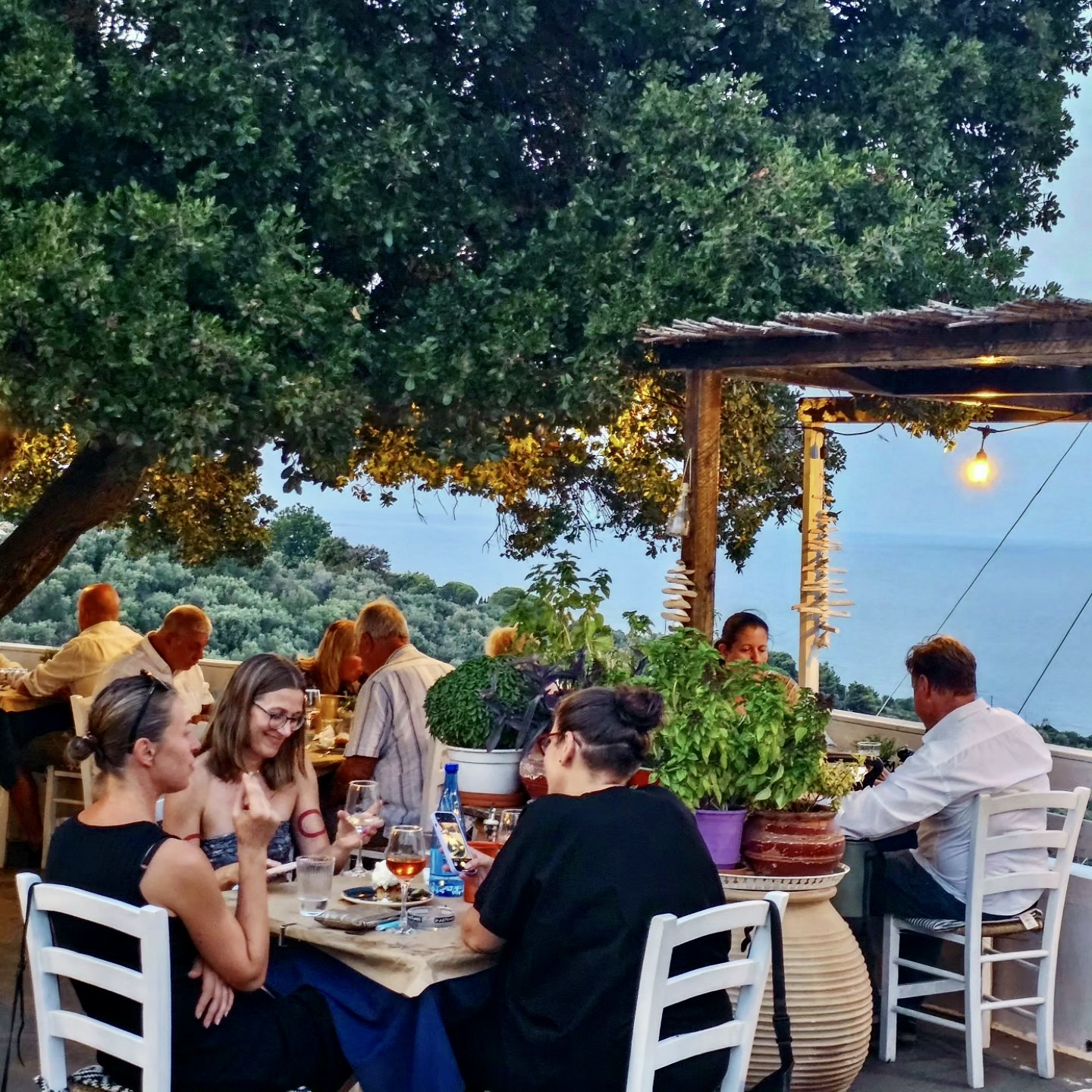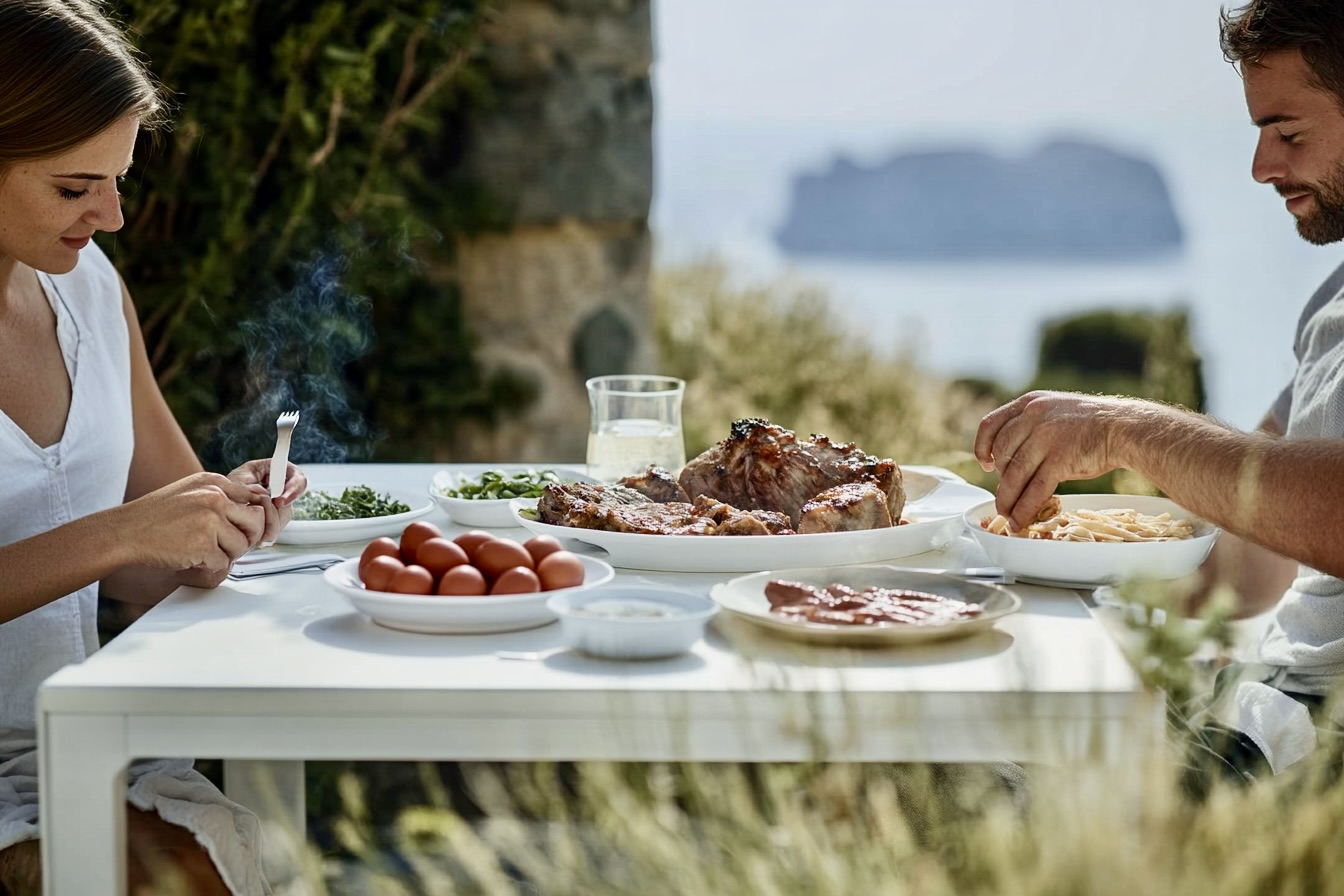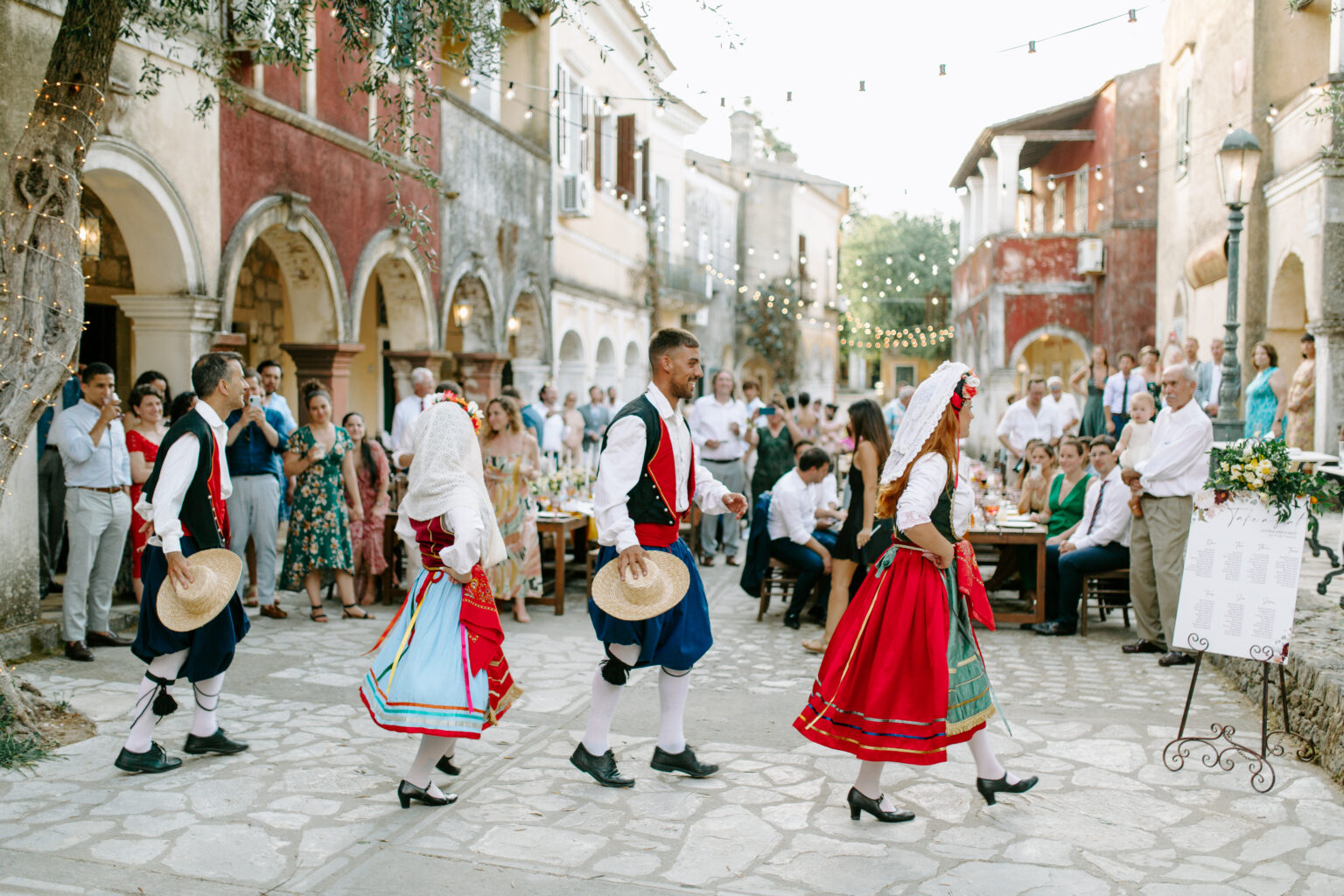Each corner of Greece celebrates Easter with both grandeur and piety, and any church you enter will make you feel the singular mystic sanctitude that only Greek Orthodox Easter services can offer. But there are some places in Greece where Easter is celebrated in a particularly special way that’s worth experiencing at least once. If Christmas is a holiday to be spent in the city shopping, drinking and dining, Easter is to be celebrated in the countryside, with whole roasted lamb cooked on the spit in scenic village settings, or stuffed goat prepared in the wood burning oven with a loud traditional music soundtrack and flowing wine.
Corfu
Easter in Corfu is an experience that’s not to be missed. Spring suits the island and, together with local Easter customs that are unique in the whole of Greece, makes celebrating Easter there especially wonderful. In Corfu, customs from its Venetian past and Orthodox tradition combine to create a solemn and at the same time festive atmosphere. The island’s 18 philharmonic bands, the castle’s cannons, and the locals who keep traditions alive, all enrich the festivities. On Good Friday the procession of the Epitaph takes place, with the bands playing works by Albinoni and Chopin’s marche funèbre, while on Holy Saturday, the service at the Agia Paraskevi church in Spianada square, is accompanied by fireworks that turn night into day.
The most impressive tradition comes the following day, when “botides”, clay jugs full of water, are thrown onto the street from windows and balconies on the morning of Holy Saturday. This takes place immediately after the service of the First Resurrection and the procession of Saint Spiridonas’ relic to the sound of cannons. This tradition is said to originate from a passage from a psalm “thou shalt dash them into pieces like a potter’s vessel”. Stroll around the town’s kantounia (narrow streets), grab a table at one of the scenic cafés on one of the narrow streets among the five-story buildings, walk on Liston and Spianada squares, and enjoy every moment of spring and Easter on the island.
Rhodes
The medieval style of Rhodes suits the mystic atmosphere of Easter. On Good Friday, the most solemn Epitaph procession is that of Agios Fanourios that crosses the alleys of the medieval town and is probably one of the most mystical processions you’ve ever experienced. The procession of the Epitaph of Panagia Katholiki in Kremasti is also very special. The tradition of “vournon” in Agios Isidoros in the Attaviron municipality that starts on Holy Saturday and ends on Easter Monday is also very interesting. According to this tradition, the single men of the village need to do some things like bring large tree trunks to light the “kalafounos” fire on Holy Saturday, and to hang the effigy of Judas in the village square. On the same day, they appoint the members of the “court” which will judge the single men on Easter Monday. On Easter, the men who are to get married soon, and are participating for the last time, are the ones to set Judas on fire. The next day, the court judges the participants, and those who haven’t followed the rules need to pay a fine, or else they are sentenced with the vourna, that is, they are pushed into a water trough. If it’s your first time visiting the island, we recommend walking across the whole medieval town of Rhodes, walking on every alley from the palace of the Grand Master of the Knights and around the moats, it’s simply magic.
Mykonos
The island of Mykonos does not have the same solemn atmosphere are Corfu or Rhodes, but it perfectly combines Easter with fun. Mykonos offers tradition and Christian Easter rituals, as well as a light vibe that brings summer to mind. If you want to do more on the island, apart from just strolling around and enjoying the nightlife, the best choice for the Holy Week services is the Paleokastro monastery, in Ano Mera, as well as the Alefkantra cathedral. In Hora, the Epitaph procession takes place on the bright white streets of Matogiannia, and all the Epitaphs come together to end up at Gialos, at the old harbour. On Easter, at the cathedral in Hora, the burning of Judas is held, so, after the traditional meal, it’s worth visiting. You should make reservations in advance for Saturday night dinner and Easter lunch, as the island is full of visitors during this period, and you risk not being able to find a place to eat.
Hydra
If you prefer a smaller sized island, Hydra is the destination for you. You don’t have to worry about traffic or parking spaces, since there are no cars allowed on the island. So, carefree, you can enjoy a lovely Easter on scenic Hydra. The most impressive tradition here is the Sea Epitaph at Kaminia, since there, the Epitaph procession ends in the sea, after going around the cobblestone alleys, in order for the waters to be sanctified and the seamen to have safe travels. Make sure to be on the island on Good Friday so as not to miss it. On Easter, after the traditional meal, they burn an effigy of Judas at the harbour, in front of the Merchant Marine Academy, with fireworks painting the sky in shades of red, yellow and blue.
Patmos
It’s not just the island with the gorgeous narrow streets and the blooming gardens, but it’s also this unique energy that the monastery of Agios Ioannis Theologos has, that during Easter is ten times stronger. So, if you want to experience Easter in all its grandeur, you need to visit Patmos, where John the Evangelist wrote the book of the Apocalypse. One of the more special traditions in Patmos is the ceremony of the Holy Washbowl and the recreation of the Last Supper that take place on Holy Thursday. A platform is set up in Xanthos square, and the abbot of the monastery portrays Jesus Christ, symbolically sprinkling the feet of the monks. It’s a tradition that first started in the 4th century and was practiced mostly at monasteries, while during the Byzantine times the emperors would participate, washing the feet of poor citizens. During the Epitaph procession, the housewives are sprinkled with rosewater, while on Easter during the Vespers of Love the Resurrection Gospel is read in 7 languages. The Holy Week services are held in the Agios Ioannis chapel. The most solemn resurrection service is held at the courtyard of the women’s monastery of Evangelismos where the nuns chant without the use of microphones, and there are no fireworks.
Read also:
6 Easter time experiences on Paros
Nafplio, Pelion, Monemvasia: Spring driving in three of Greece’s loveliest areas
10 Greek destinations for this Easter: Culture, good food, unique atmosphere, beautiful routes



